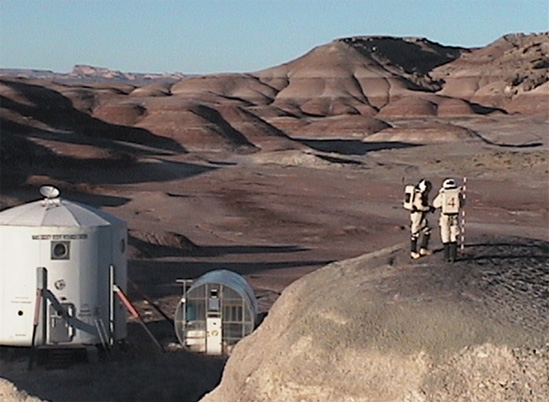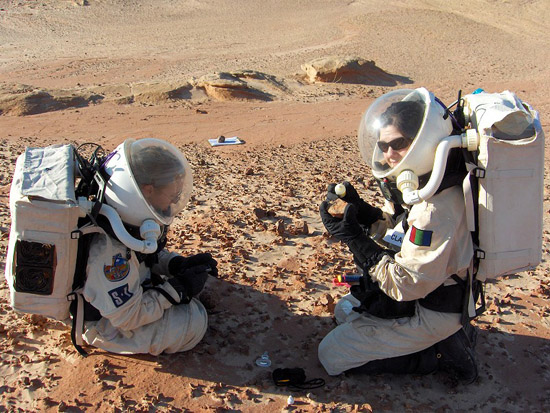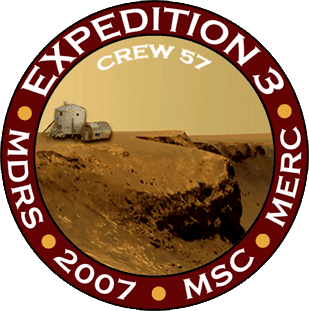
Mars Desert Research Station
|
|
Background
The MDRS is a facility intended to support Mars analogue |
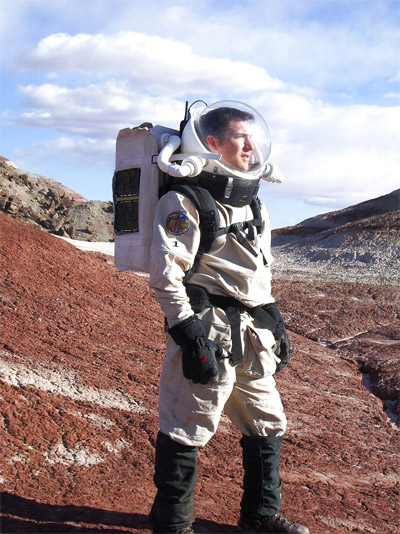 |
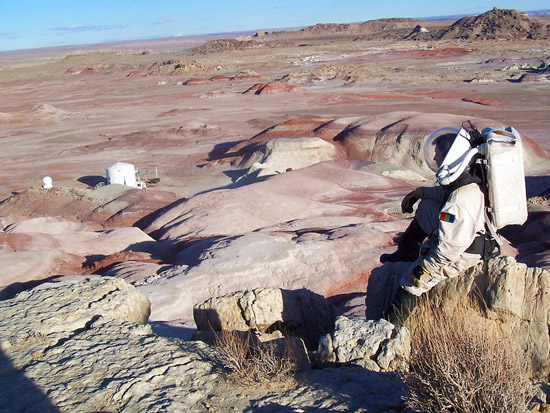
|
|
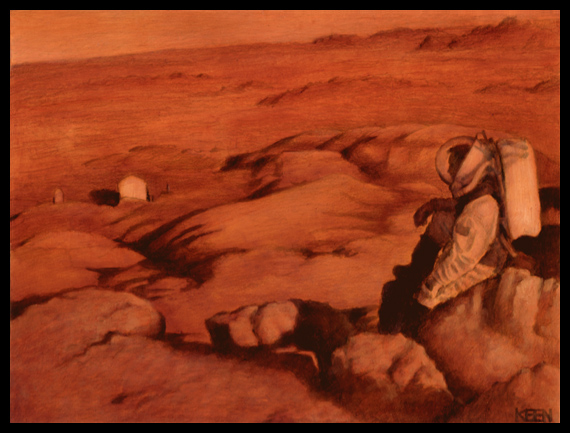
This is a great painting of the photo above by my friend Mike Keen |
|
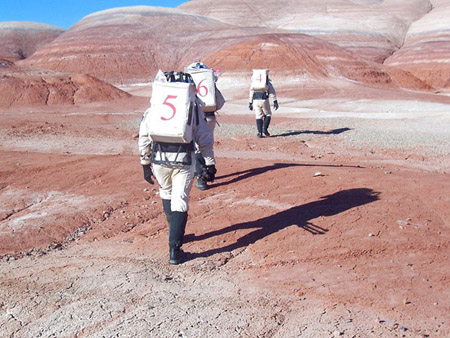 |
NASA Reference Mission do not consider how exploration would be done most efficiently on Mars to maximize the science return. Rather, engineering constraints determine what the scientist-astronauts may do. A better approach would be to research what the requirements for the scientific exploration of Mars would be, and use them to design exploration strategies that inform engineering decisions and expedition planning. From an operational perspective, we do not yet know how to conduct a Mars expedition so that it maximizes the scientific output. This is the information that is being gathered at the MDRS test bed. |
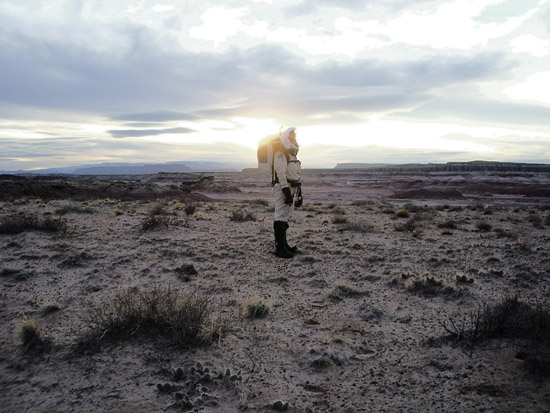
|
|
|
exploration technology, human factors and work-process efficiency studies adapted from industrial engineering techniques, while simultaneously studying the conduct of field science such a geological, geophysical and biological investigation of a Mars analogue setting. |

|
 Click to see the large panoramic |
|
WHY MARS?
A world with a surface area the size of the combined continents of the Earth, |
|
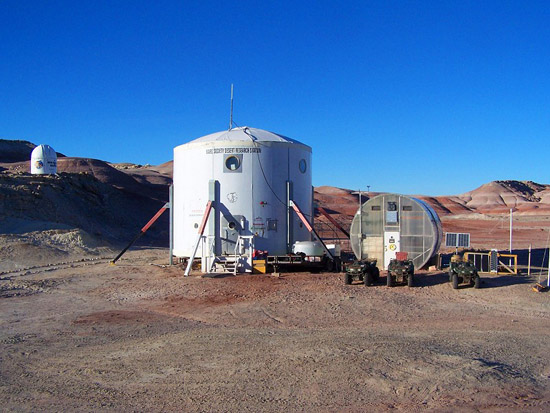
|
|
Expedition Three
On ExThree, several projects were carried out in support of FMARS2007, a
four-month Mars analogue mission |
|
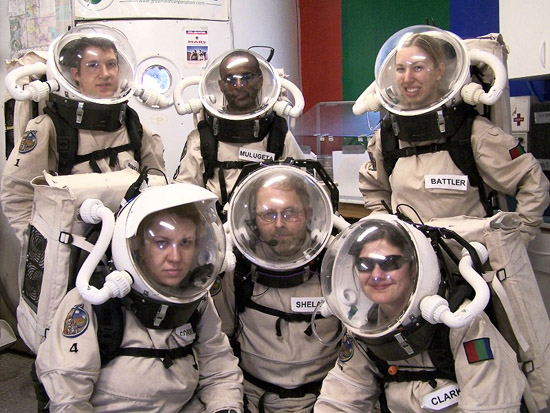
Crewmembers from left to right
Top row:
Chief Engineer – Jon Pineau, space systems engineer for Stellar Solutions (Golden, Colorado, USA)
Commander – Lealem Mulugeta, space systems mechanical engineer (Winnipeg, Manitoba, Canada)
Geologist – Melissa Battler, planetary geologist (Roseville, Ontario, Canada)
Bottom row:
Executive Officer – Danielle Cormier, CSA Canada Arm Controller (Amos, Quebec, Canada)
Field Engineer – Randall Shelaga, Aerospace Engineer (Edmonton, Alberta, Canada)
Biologist – Olathe Clark, environmental biologist (Lake St. Peter, Ontario, Canada)
|
|
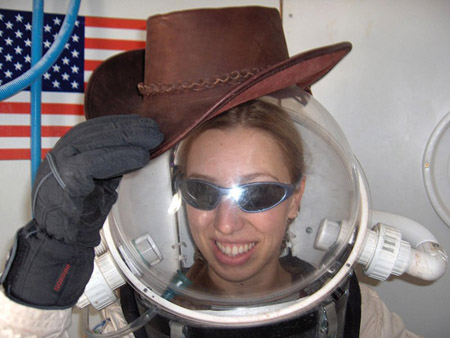 |
During the two week mission the six of us lived as if we were on Mars. The Habitat and extravehicular activity (EVA) suits were not pressurized, but were used to simulate the resources and limitations of doing science and operations far from the safety of Earth. Days were long. It was usual to work from 7:30am to midnight every day trying to keep the Habitat (Hab) running and filling out reports. However, through the hard work we built strong friendships and had a lot of fun! I personally used the experience as a unique perspective for designing human space vehicles and as training for applying to become an astronaut. |
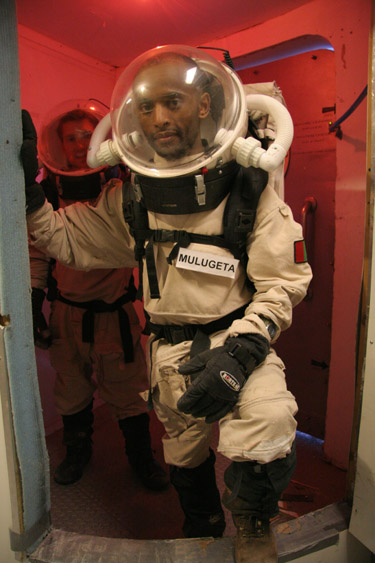 |
|
|
consisted of Mountain House freeze-dried foods supplemented by fresh vegetables from the GreenHab, the greenhouse and gray water treatment structure. It was found that the freeze-dried meals were very efficient requiring very little time and effort for preparation and cleanup. This gave us more time to work on our various tasks and fully enjoy our breaks to eat and discuss many intriguing space topics. Surprisingly the entire crew enjoyed the food. While it did not compare to fresh food, the meals consistently got high ratings in our satisfaction survey. This was especially true when vegetables such as arugula, cilantro, radishes, beats, garlic, and others were added from the GreenHab making it easy to envision tolerating freeze-dried food for extended missions. |

|
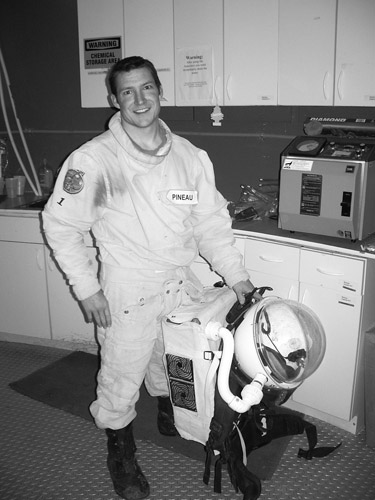 |
|
Engineering
The engineering team, including myself, ensured the overall proper functioning |
|
|
the ExThree engineering team spent the majority of their mission repairing the ATVs, which were used to simulate “Mars rovers” for astronaut transportation, and maintaining the Habitat life support and waste recycling systems. Several days were devoted to the ATVs including clearing out the layers of mud, dust, and oil out of fuel and air systems from hard desert use, making repairs, and tuning. The GreenHab also received a lot of attention, resulting in healthy crops, which were harvested regularly for fresh salads, and water hyacinths that helped produce clear odorless water for flushing the toilets. Much time was spent in making waste water processing a hands-off system. A float valves, pumps, and filters were replaced, enabling the crew to cleanly make use of the gray water recycling system with very limited intervention. |
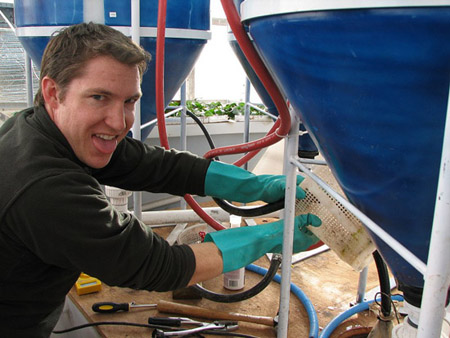
|
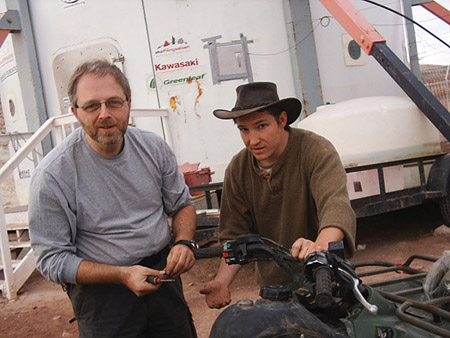 |
also accomplished. To improve morale the Habitat bathroom received an overhaul. A wall mounted rack was also constructed for mounting a set of DC/DC converters for the Hab power system. The Habitat got its power from a diesel generator that charged a bank of batteries and unfortunately transferring between the two sources was a manual process. This made for some tight situations where we tried to maximize use of the entire battery range. Once the generator unexpectedly quit while I was on a long EVA. This required the crew to drastically reduce power until I could get back and fix the problem. Even with the finicky system we luckily never lost power to the Hab during the two week mission. |
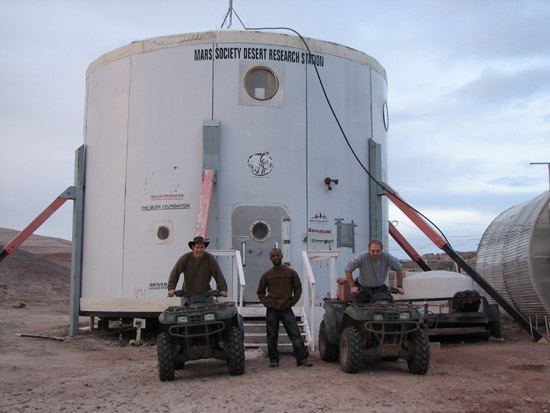
Biology and Geology:
On this rotation Crew Geologist, Melissa Battler, and Crew Biologist, Olathe Clark, |
|
 |
sample sites, documented them using Sklar FDM (Field Documentation Methodology) and performed regolith-landform characterization. Samples of rocks, minerals, and soil were collected for analysis. It was found that sites of microbial colonization can be recognized on a macroscopic level in the field, within specific geologic units; therefore the microbial/regolith-landform mapping could be continued at an accelerated rate through remote sensing data and field observations alone. |
|
CSA Mars Exploration Missions MDRS Main Site Well that is all until next time. As always if you would like to see any other pictures of specific parts of the experience, or want higher resolution copies of what are on the web site, just let me know. Also, don't hesitate to ask if you have any questions. jon.pineau@colorado.edu Return to the MDRS Mission page here |
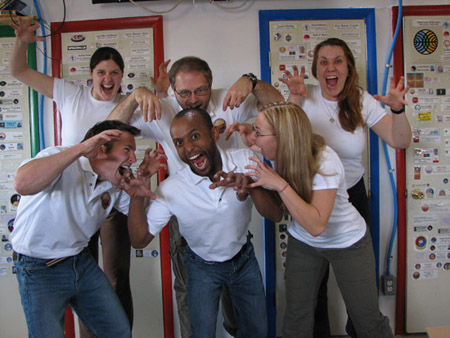 and this was after only 2 weeks... |
